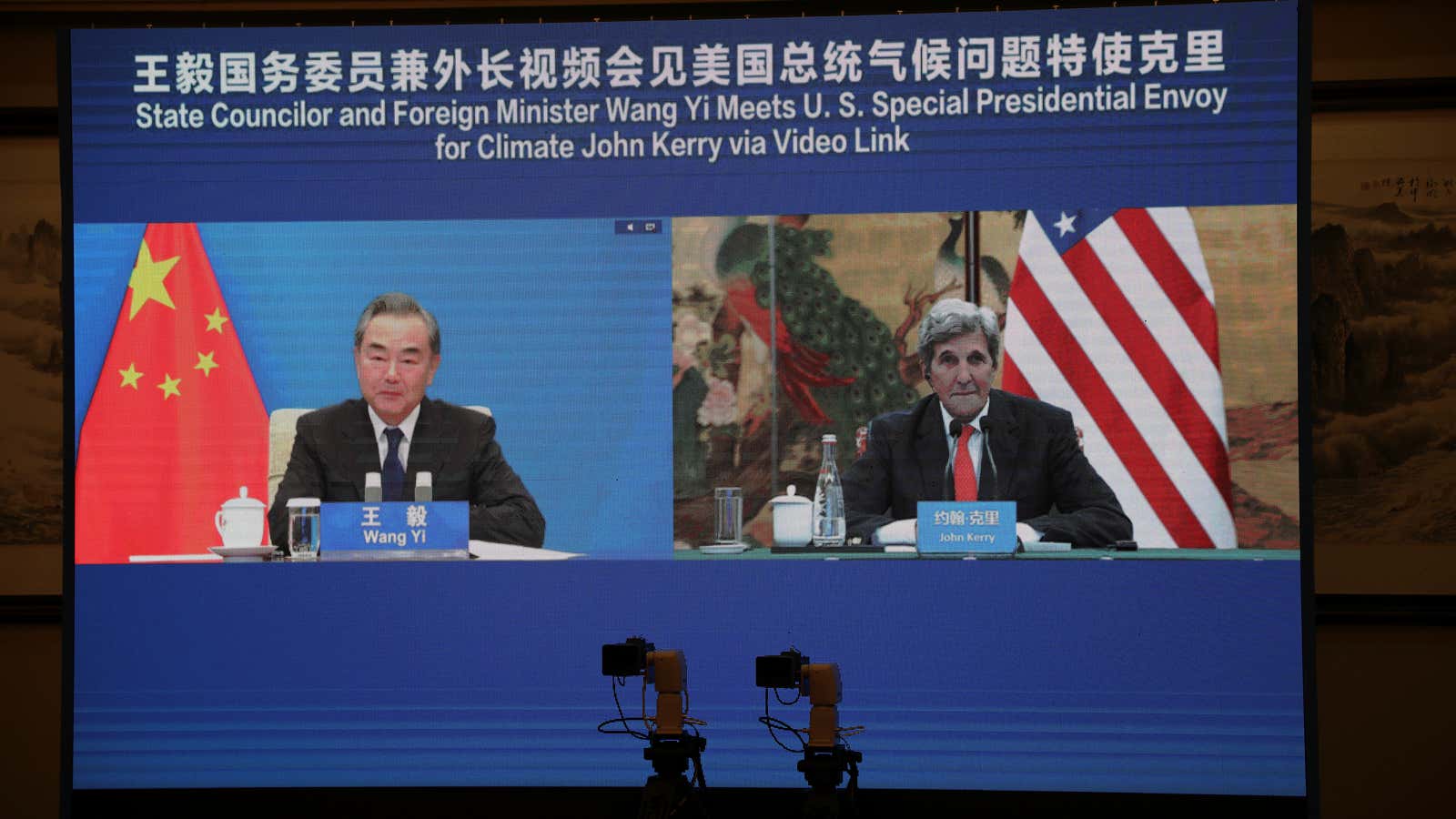Last week’s meetings in China between US climate envoy John Kerry and Chinese leaders yielded no concrete agreements or public pledges between the world’s two largest carbon emitters on how to jointly tackle the climate crisis.
Fraught US-China relations did not help.
But another reason for the impasse could be that for Beijing and Washington, the prospect of global climate cooperation is creating a strong undercurrent of climate competition.
The energy revolution as a geopolitical battlefield
Both countries acknowledge that international cooperation is critical to addressing the climate crisis, and recognize the importance of using multilateral institutions like United Nations and the World Bank to address climate-related issues.
Both, however, also see the climate crisis, and the global response to it, as a high-stakes competition for influence and primacy over the technology and resources that will fuel the world’s economy in the decades to come. Beijing and Washington have already sketched out the battle lines, zeroing in on the global energy transition away from emissions-spewing fossil fuels as a key competitive arena.
“It’s difficult to imagine the United States winning the long-term strategic competition with China if we cannot lead the renewable energy revolution,” Secretary of State Antony Blinken said in an April speech on American global climate leadership. “Right now, we’re falling behind.”
And China wants to pull ahead too. “Compared with traditional fossil energy sources, new energy sources do not have obvious competitive advantages in terms of technology and economy,” notes an energy revolution strategy plan published by the National Development and Reform Commission and the National Energy Administration in 2017, adding that “the global energy governance system is being reconfigured at an accelerated pace.” Reading between the lines, the implicit meaning seems to be that China should acquire and cement competitive advantages in the new energy economy, in order to exert its influence over the future international energy landscape.
US-China relations and the climate crisis
That’s not to say there is no room for cooperation—if only Beijing and Washington could agree on basic ground rules for engagement. Right now, that’s not looking so promising.
Washington hopes to separate climate questions from deep-rooted US-China disagreements, including over human rights. China says this is impossible. After all, partnering with the US on renewable energy while Washington sanctions Chinese-made solar panel materials over forced labor concerns could be seen as a sign of weakness—and not very becoming of an aspirational energy superpower.
For the US, climate cooperation is framed as an opportunity to reestablish global American leadership, particularly after four years of zero-sum politics and combative isolationism under the Trump administration. As president Joe Biden declared in his January executive order on tackling the climate crisis, the US must “exercise its leadership” to shape global climate ambitions, and to strategically wields its “voice and vote” at global financial bodies to promote measures in line with the Paris climate accord.
China is similarly looking to strengthen international climate work. It said as much in its 14th Five-Year Plan, formally adopted by the central government in March, called for the country to “constructively participate in and lead international cooperation on climate change.”
Both Beijing and Washington have set ambitious climate targets. The US aims to reach net zero emissions by 2050; China aims to get there by 2060. But sharing similar goals, while necessary, is nowhere near enough to forge cooperative partnership—especially when a fierce rivalry looms large.




